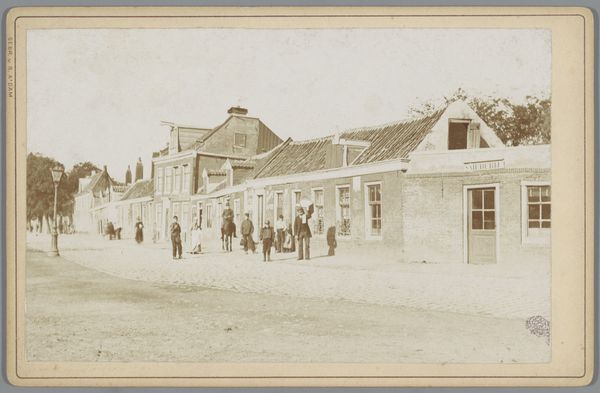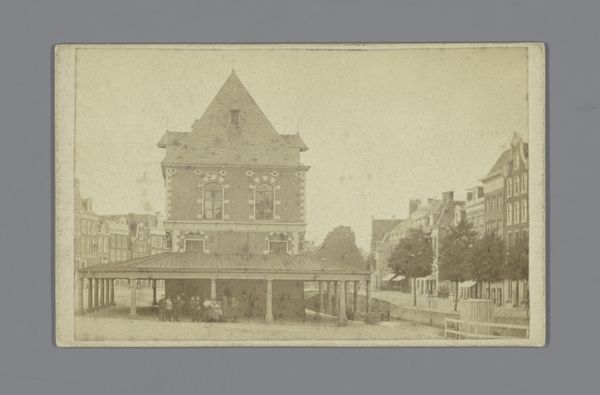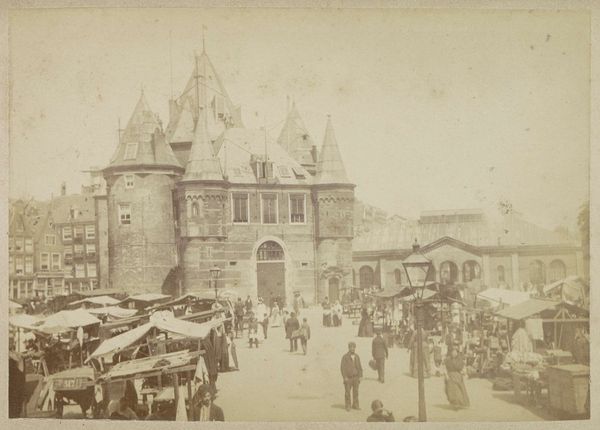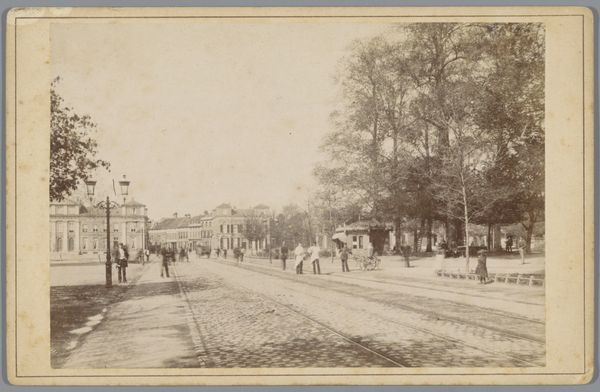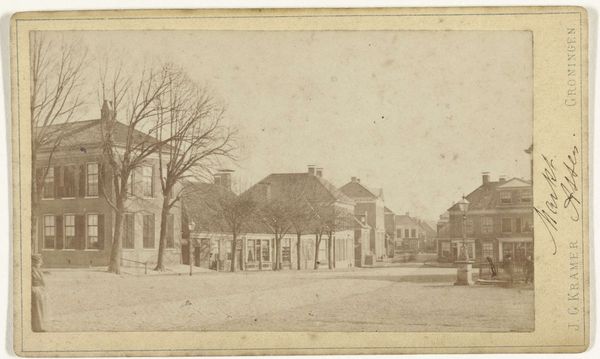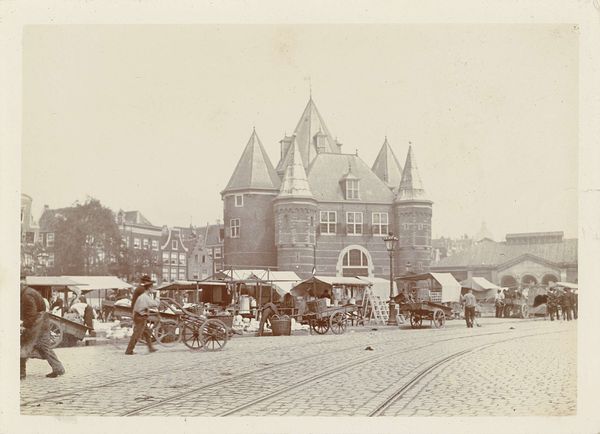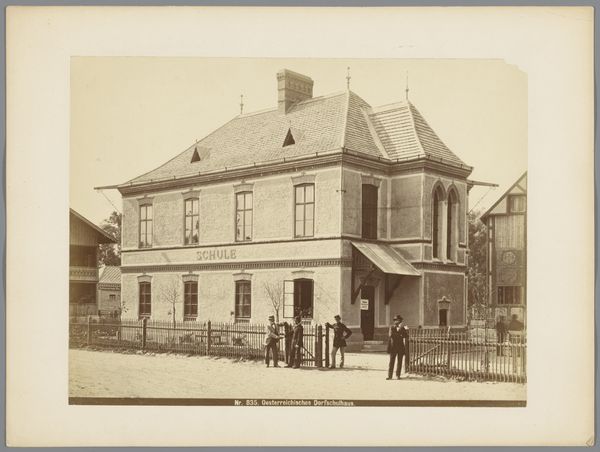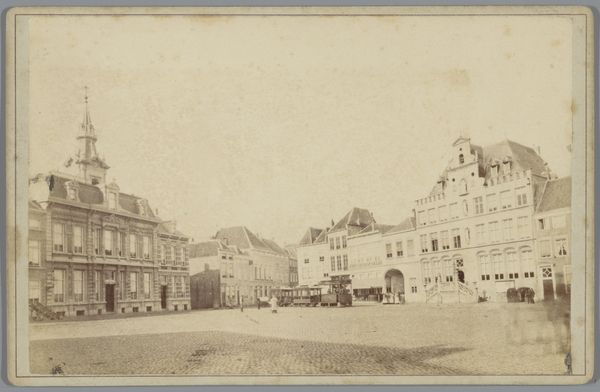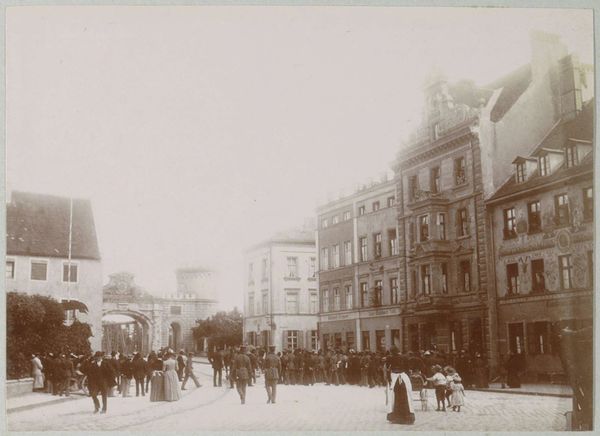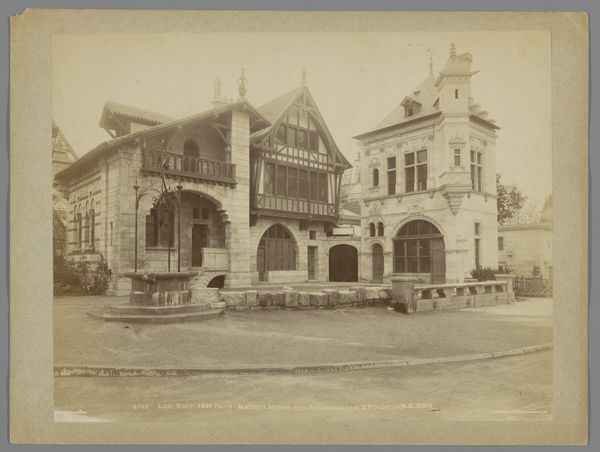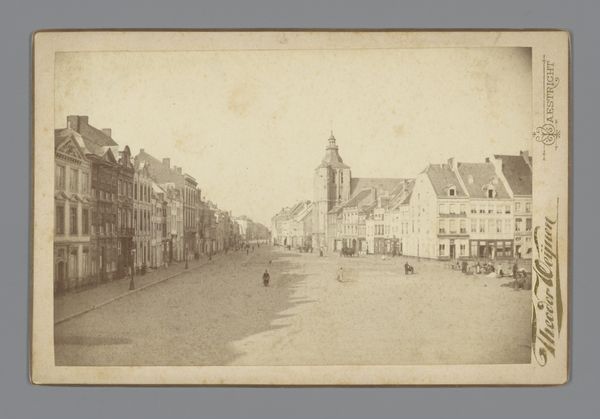
Plein te Bergen op Zoom, met de toren van de Sint-Gertrudiskerk op de achtergrond 1880 - 1900
0:00
0:00
photography
#
landscape
#
photography
#
19th century
#
cityscape
Dimensions: height 107 mm, width 166 mm
Copyright: Rijks Museum: Open Domain
Curator: Before us, we have an intriguing example of 19th-century photography. The artwork, titled "Plein te Bergen op Zoom, met de toren van de Sint-Gertrudiskerk op de achtergrond," roughly translating to "Square in Bergen op Zoom, with the tower of the Saint Gertrude Church in the background", is attributed to Jannis Jacobus van Melle and dates from approximately 1880 to 1900. Editor: The scene emanates a sense of serene timelessness. I am drawn to how the subdued sepia tones establish a powerful, nearly palpable link to the past, and the deliberate arrangement of geometric structures within the image provides stability and order. Curator: The appeal of photography lies in the physical and chemical procedures involved. The tones here reveal insights into 19th-century photographic processes, perhaps suggesting a specific type of paper, processing, or even later retouching that shaped this print. I would be interested in understanding more about how the residents interacted with the photographer. Editor: Consider how the construction and placement of a covered market contribute to the narrative. I find this invites one to question who was privileged enough to gather there, and what goods passed through its structure. The way the stone creates a strong tactile essence speaks about commercial life during the late nineteenth century. Curator: A close reading shows how the interplay of light and shadow emphasizes the contrast between the meticulously crafted structures and public space. Van Melle uses geometry with great accuracy—consider the strong diagonal lines from the church steeple, directing your gaze towards the main area. Editor: I think examining how the people and their relationships within that public setting come out on the print provides insights into urban experiences. Considering how time-intensive these prints would have been to take, perhaps some elements may be staged, or altered to express idealized concepts, giving shape to notions of what defines belonging within Bergen op Zoom society during the era. Curator: Interesting perspectives. Looking at it from the language of form itself really highlights the composition of a historical subject matter through modern modes of art. Editor: Precisely! Reflecting on it from the ground up offers ways for us to reimagine ourselves in an old marketplace with newly found insight.
Comments
No comments
Be the first to comment and join the conversation on the ultimate creative platform.
